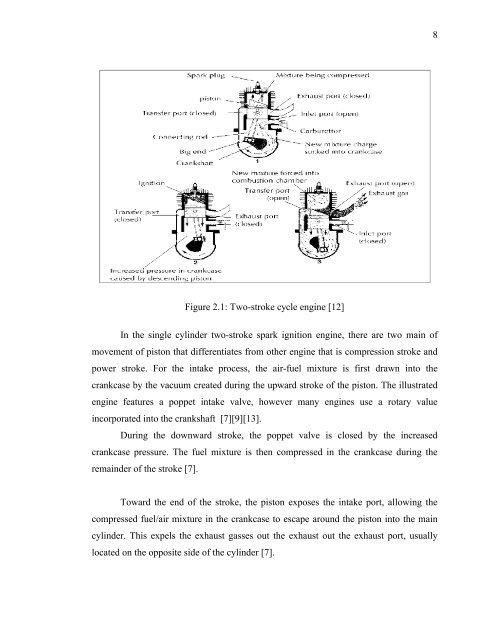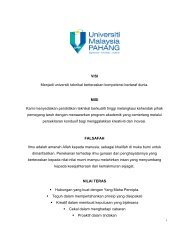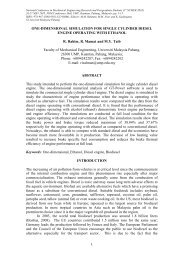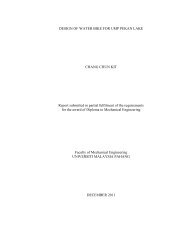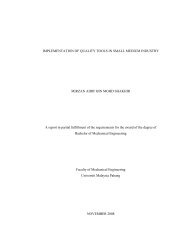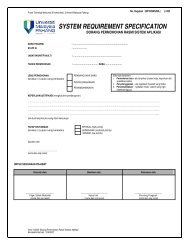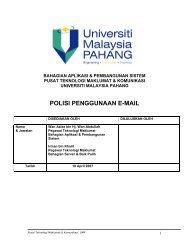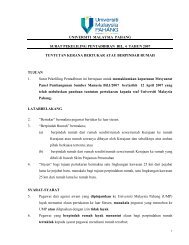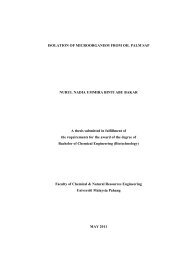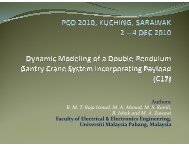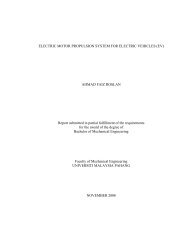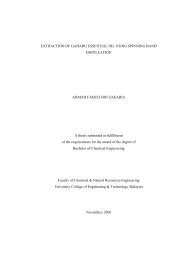crankcase analysis for two-stroke spark ignition engine ting swee
crankcase analysis for two-stroke spark ignition engine ting swee
crankcase analysis for two-stroke spark ignition engine ting swee
Create successful ePaper yourself
Turn your PDF publications into a flip-book with our unique Google optimized e-Paper software.
8Figure 2.1: Two-<strong>stroke</strong> cycle <strong>engine</strong> [12]In the single cylinder <strong>two</strong>-<strong>stroke</strong> <strong>spark</strong> <strong>ignition</strong> <strong>engine</strong>, there are <strong>two</strong> main ofmovement of piston that differentiates from other <strong>engine</strong> that is compression <strong>stroke</strong> andpower <strong>stroke</strong>. For the intake process, the air-fuel mixture is first drawn into the<strong>crankcase</strong> by the vacuum created during the upward <strong>stroke</strong> of the piston. The illustrated<strong>engine</strong> features a poppet intake valve, however many <strong>engine</strong>s use a rotary valueincorporated into the crankshaft [7][9][13].During the downward <strong>stroke</strong>, the poppet valve is closed by the increased<strong>crankcase</strong> pressure. The fuel mixture is then compressed in the <strong>crankcase</strong> during theremainder of the <strong>stroke</strong> [7].Toward the end of the <strong>stroke</strong>, the piston exposes the intake port, allowing thecompressed fuel/air mixture in the <strong>crankcase</strong> to escape around the piston into the maincylinder. This expels the exhaust gasses out the exhaust out the exhaust port, usuallylocated on the opposite side of the cylinder [7].


